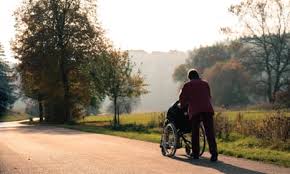Italy: The Conero Regional Natural Park

Rome: Halfway up the Italian Peninsula, in the region of Le Marche, rests the Conero Regional Natural Park. This nature reserve lies three hours by car from Rome and 20 km south of Ancona, commonly referred to as the city where the sun rises and falls over the ocean. Established in 1987, this vast reserve is dedicated to the protection of flora and fauna, becoming a sanctuary of untouched nature.
Ancient ruins lay hidden within the lush green forests and along the reserve’s 20 km of shoreline. Bordering the east side of park, coastal cliffs provide a panoramic view of the white, pebbly beaches below that look out over the Mediterranean Sea and Portonovo Bay.
The Flora: The Conero Park can be seen as a meeting ground for northern and southern European maritime plants. It is home to more than 1,000 wild flora species and subspecies. Among these species are rarities like Asphodeline liburnica, the green, six-petalled flower that forms a star; Bellevalia dubia, the blue budded flower; and Fumana arabica, the yellow Mediterranean Rock Rose. Other botanical peculiarities, such as the tree spurge, the violaciocca and wild fennel, make up an essential part of this diverse habitat. Common tree species, like pines, cypresses, cedar and broad-leaved holm oak, can be found in the park. The overwhelming presence of flora in this area can be attributed to reforestation efforts that started in the 20th century. The dense greenery of the park provides Italy with the typical products of the Le Marche region, including lavender, olive oil, honey and Conero red wine.
The Fauna: Known for its enticing birdwatching, the forests of the Conero Park provide a safe shelter for thousands of birds of prey that migrate to and from the region. Most of the birds migrate from their winter habitats in Africa to nest during the spring season in Italy. Among these birds, the majority are hawks, falcons and sailplane birds, like cranes and storks. Herons are another popular species of bird that lure visitors to the reserve. The park offers hides, designed for observation of this type of bird, whether in flight, fishing or standing still. Mammals are also protected on the grounds and include foxes, skunks, weasels, hedgehogs and badgers. Conero recently opted to protect wild boar and roe deer, despite their intrusiveness and not being native to the area.
The Ancient World: Along the crystal-clear waters of the Portonovo Bay run the uncontaminated beaches of the Conero Park, home to the Church of S. Maria of Portonovo and the Bosis Tower. Built in the 11th-century, S. Maria of Portonovo sits atop the cliffs overlooking the bay. When the church closed in 1320, S. Maria was overwhelmed by the elements and a lack of maintenance. Repairs were made in 1934, and the abbey reopened for worship. Since reopening, S. Maria of Portonovo has provided a spiritual element to the park. It can be seen as a place of meditation and peace.
Accompanying the church on the Portonovo shores stands the Bosis Tower. Built in 1716 by Pope Clement XI Albani, the watchtower was originally used as a defense, during the Spanish Succession. It also provided protection from pirates and smugglers. Ownership of the tower was turned over to the poet Adolfo De Bosis, at the end of the 19th centruy. De Bosis left the tower to his son, Lauro. Upon inheritance, Lauro used the fortress as a summer home. The Bosis Tower is not a typical stop on tours through the park. However, it can be visited upon request.
Visitors can explore the limestone cliffs, rocky Mediterranean formations, caves and lush forests on foot, by bike or by horseback. Hiking trails are adequately marked with signs. Maps are available, and park guides can be present, upon request.
The Conero Regional Natural Park also offers accessible tourism. Maps are available for persons with motor disabilities that specifically pinpoint accessible areas of the park. Persons with hearing impairments are offered tours with interpreters. People affected with visual impairments are invited to tour the park from a tactical perspective, as well as sit on the beach to hear the waves and smell the natural perfumes that the park has to offer.





